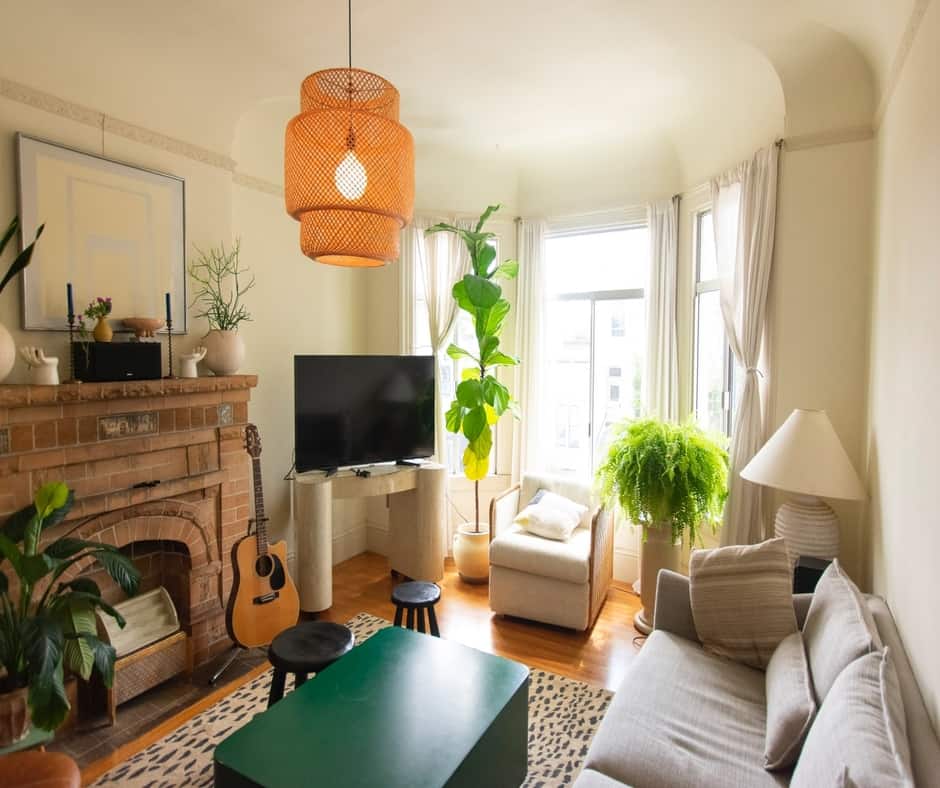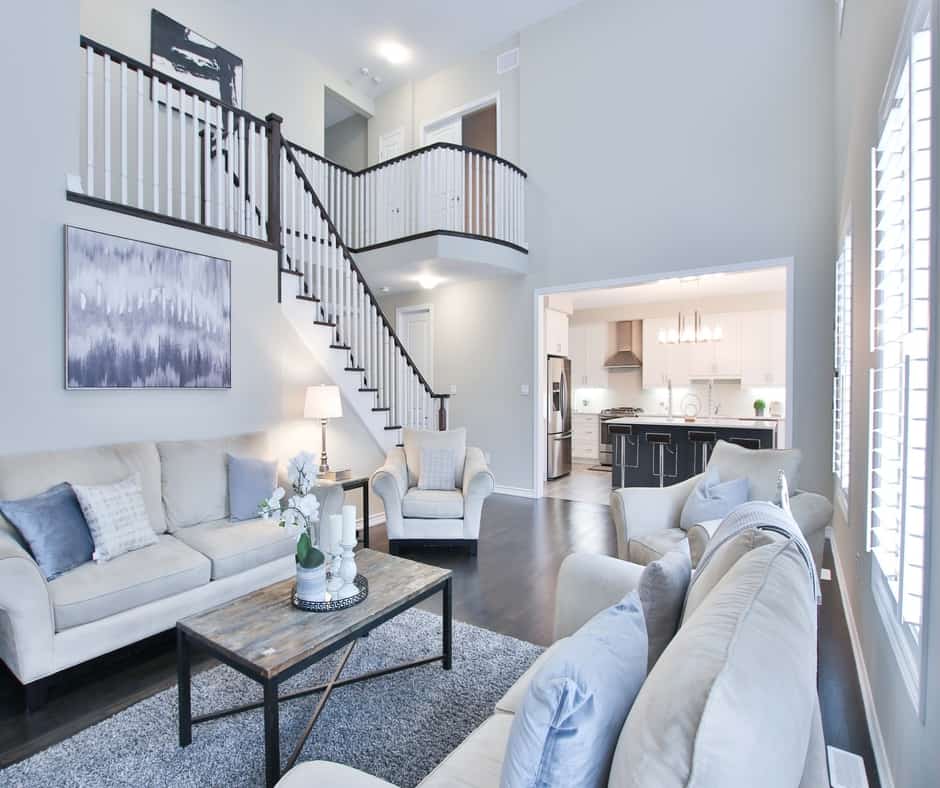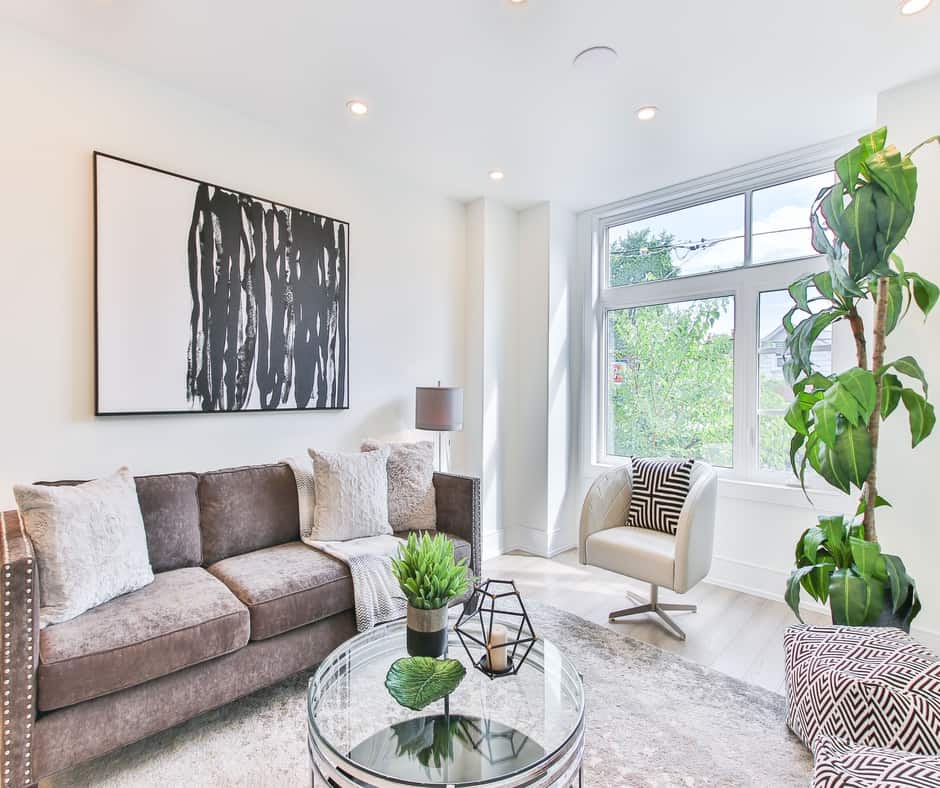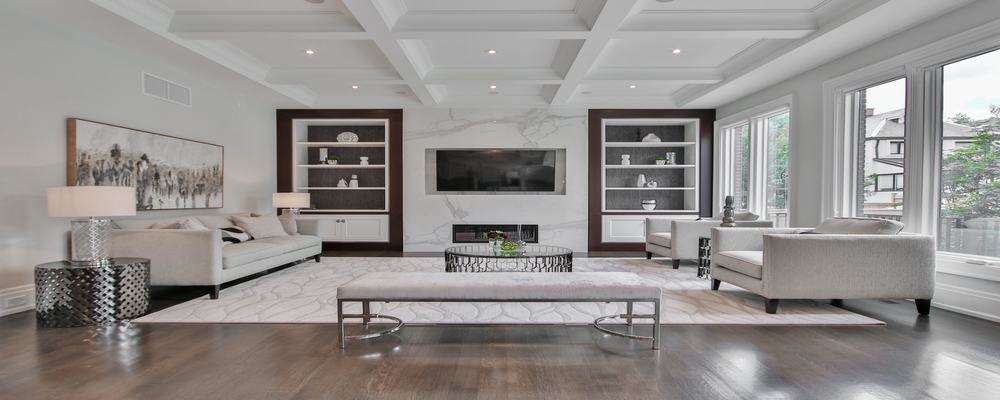What comes to mind when you think of the term living room? Does the word make you think of people gathered together, laughing, playing games, and snuggling up for a movie? For most of us, that is exactly what we think of.
But have you ever wondered why a living room is called a living room? Well, the answer is a lot more mysterious than you might think.
The living room has been called a variety of names due to its variety of purposes, the most shocking being: the death room.
In This Article We'll Discuss
What is the Origin of the Term Living Room?
19th Century Receiving Rooms
In the 19th century, the space at the front of the house was called the drawing-room, parlor, or the receiving room. It was common for women to wait all day in the receiving room for guests to arrive.
Children were not permitted in the receiving room because it was reserved for entertaining.
It may seem foreign to us, but in those days the receiving room was a formal space for adults to gather, court, and talk.
Other Popular Names
The formality of the space made it ideal for adults to talk openly without the ears of children, and to practice music and drawing in peace.
For these reasons, it has also been called the parlor. That name is derived from the French word parle, which means to talk.
It has also been called the drawing-room because it was a great room to create in.

Death Room
After WWI, the influenza Epidemic of 1918 hit. The epidemic took the lives of millions of people. Hospitals could not keep up and neither could funeral homes.
Families would lovingly keep the bodies of their deceased and grieve them until their loved ones could be buried.
So, receiving rooms were not being used to receive guests or celebrate art. Instead, the space was used to keep bodies and mourn together until a funeral could be arranged.
The unfortunate nickname “death room” became common.
What is the Real Meaning of Living Room?

Legend has it that the term living room was coined by Edward Bok, an American writer for Ladies Home Journal.
He allegedly suggested the term in an edition of the journal once the world emerged from the flu and receiving rooms had people in them again.
He suggested that calling the space the living room would celebrate the living and people would be able to move forward.
Another interesting possibility shows that the term “living room” was referenced as early as the 1890s.
It referred to a “living room” that reflected the designer’s intention for a warm space rather than the customary rooms of the time.
Edward Bok is likely credited with the term because he referenced older material and he believed in the practicality of using a space more thoroughly.
Whether Bok came up with the term, coined it, or simply used it, “living room” was a term that resurfaced to convey the purpose of the space: to get together in a comfortable room.
What is the Difference Between a Living Room and a Family Room?
Many people use the terms “family room” and “living room” interchangeably. But, they are quite different.
Most houses don’t have both, but there are some extra-large houses that do.
Living Room
Officially, living rooms are more formal than family rooms. Living rooms, as mentioned above, were intended for adults and formal company.

The most beautiful furniture was reserved for the living room and the space was used strictly for entertaining rather than for family time or regular activities.
Traditional living rooms are also thought to be larger than family rooms and are always at the front of the house.
Family Room
A family room is a big open space that has our TV, art, children’s toys, and whatever else we might need centrally located. We play games in our family rooms and have company in the family room.
Family rooms also have expensive furniture, but they are decorated less formally. Instead of structured fine furniture, a family room likely has a cozy sectional or couch.

It is an inviting space for winding down. A family room is also traditionally smaller than a living room and set near the center of the house.
Living rooms and family rooms have different sizes, locations, functions, and aesthetics.
Today, most people have a family room that they use for everything from family time to their home office to formal entertaining.
Who Calls It a Living Room?
North Americans use the term living room.
In the South of the United States, the term “front room” is still popular. However, both Canadians and those from the United States generally use the term living room.
Why Did the Term Living Room Stick?
Not all English-speaking places use the term living room. For example, a “lounge” is the common term in Australia.
The term “living room” likely took such a hold in North America because of Edward Bok and the Ladies Home Journal. As TV and other types of media adopted the term living room, the repetition took root in American English.
And, Canadian broadcasting uses a lot of programming from the US. So, that’s why Canadians and Americans would say living room while other parts of the world use different terminology.
What Do the British Call a Living Room?
The British still use the term “sitting room.” This can seem quaint and formal to us, but the sitting rooms in the UK serve the same purpose as living rooms in American households.
Many houses in the UK are smaller compared to large American homes. So, there are differences in the furniture and style of the room. But, both are used to gather with family and friends informally and to entertain.
Conclusion
The history of the living room is incredible. Across the world and throughout time, we have created a space that’s meant for gathering with one another.
Whether it be in the form of a casual living room or a formal receiving room, people are brought together in these spaces.

